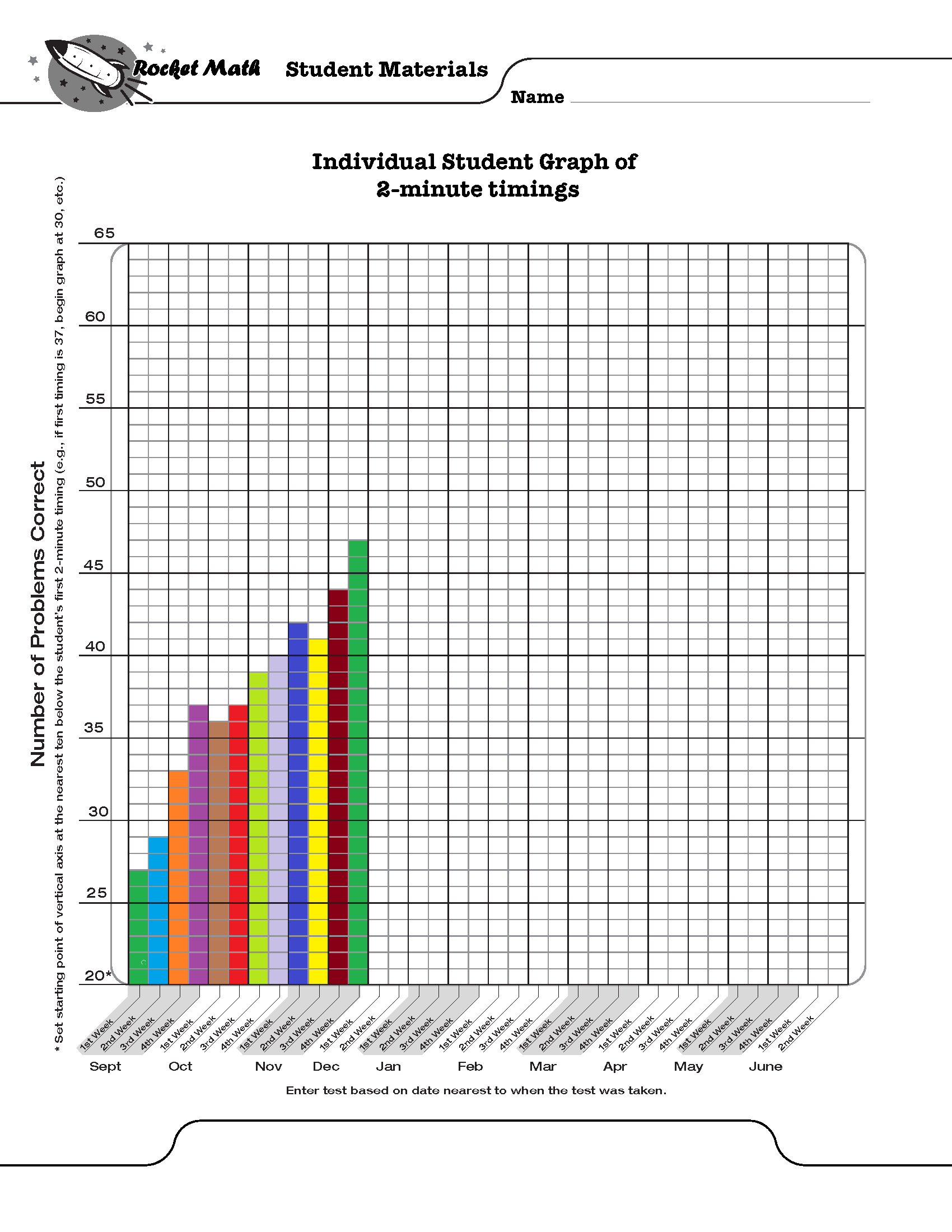To prove whether students are making progress in learning math facts.
First of all, understand that the two-minute timings are NOT a teaching tool. They are an assessment tool only. Giving a two-minute timing of all the facts in an operation every week or two allows you to graph student performance. You graph student performance to see if it is improving. If the graph is going up, as in the picture above, then the student is learning. If the graph is flat, then the student is not really learning.
The individual graphs should be colored in by students allowing them to savor the evidence of their learning. The graphs should be shared with parents at conference time to prove that students are learning. 
Progress monitoring with two-minute tests are a curriculum-free method of evaluating a curriculum. If you use the same tests you can compare two methods of learning facts to see which one causes faster growth. This makes for a valid research study.
This kind of progress monitoring over time is also used in IEPs. You can draw an aimline from the starting performance on the two-minute timing to the level you expect the student to achieve by the end of the year. (Note the writing speed test gave you goals for the two-minute timing which you could use for your end-of-year goal.) The aimline on the graph, when it crosses the ending date of each quarter, will provide quarterly objectives that will enable quarterly evaluation of progress–required for an IEP.
These two minute timings are a scientifically valid method of proving whether students are learning math facts, in the same way that tests of oral reading fluency prove whether students are learning to read. They can be used to prove to a principal or a curriculum director, for example, that Rocket Math is working and is worth the time, paper and money it requires.

